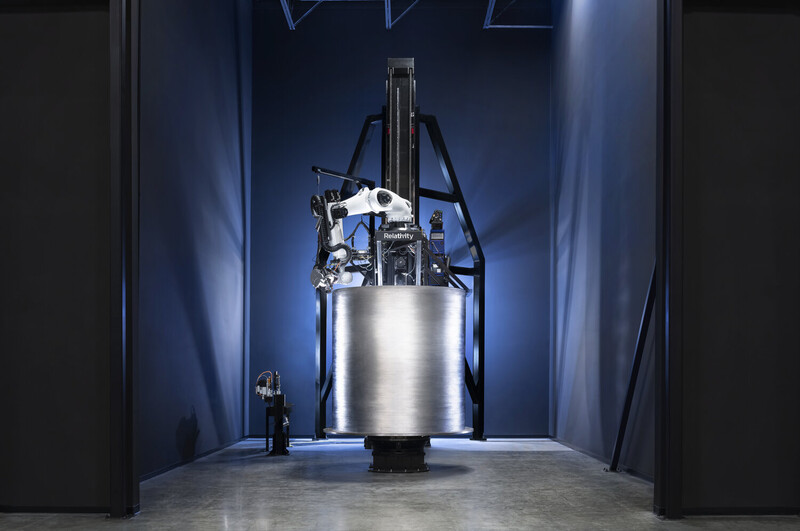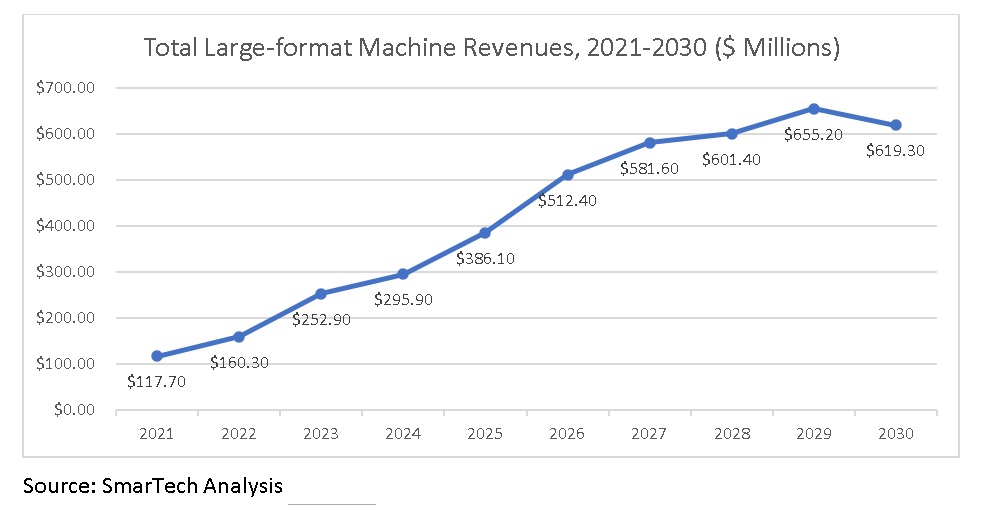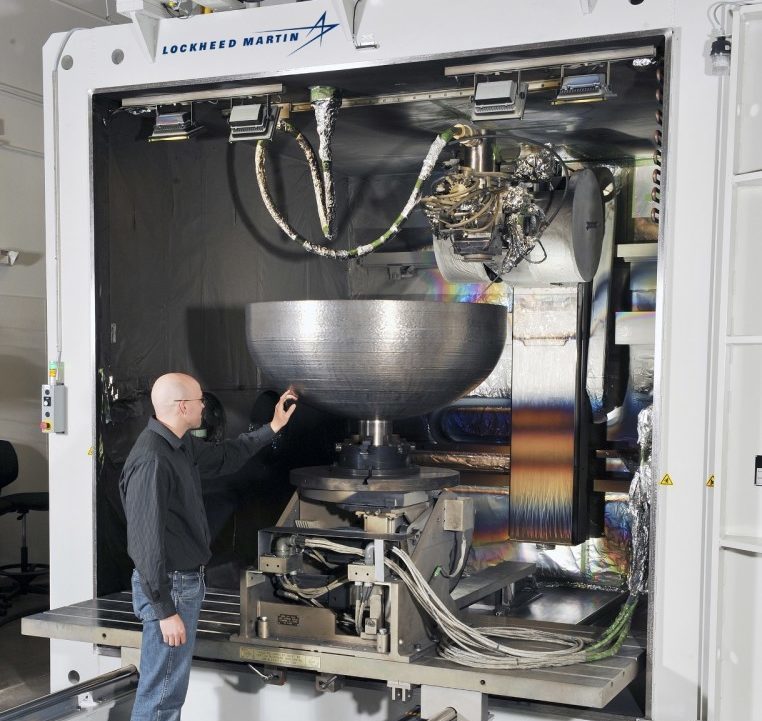SmarTech has just released its latest report and it’s about a big topic—literally. “DED and Large-Format Additive Manufacturing Markets: 2021-2030” discusses the opportunities related to large-format metal 3D printing technologies, such as directed energy deposition (DED) and wire arc additive manufacturing (WAAM). The additive manufacturing (AM) research firm projects that this sector will be worth $739 million in 2026.
DED and other large-format metal AM technologies have significant potential in a number of important markets, such as aerospace, energy, space, automotive, medical, energy, general industry and tooling, service bureaus, and marine. This is due to the ability to produce large-scale, metal objects that can then machined to finish. Because these areas are already highly specialized, the speed and cost of a 3D printed part compared to those made with traditional technologies may be enough for a company to adopt AM. If you look at Relativity Space, which has built one of the largest (if not the largest) DED system, you can see that its entire business is built around the need for enormous, specialized parts for rockets.
Insights provided by the report include its use in the repair of worn or deteriorated parts, as well as adding new features to a part, applying metal coating, and the creation of new materials from multiple metals. For instance, DED was born out of laser-cladding to repair parts and is already used to repair military equipment, as well as turbine blades, satellites, and other high-end equipment. It has even eliminated the need for emergency repairs and nonscheduled downtime at Toyota.
The report discusses the use of large-format metal 3D printing for use in aerospace, such as the producing of large structural parts that would otherwise take a year to make with traditional methods. The ability to print multi-part assembles as a single unit can reduce labor and construction times. Though the technology is not at this stage yet, SmarTech projects the use of the technology for such massive components as aircraft wings in the form of meshes with lower weights. In 2026, the market research firm estimates that the aerospace industry will purchase nearly $130 million in large-format additive machines.
Service bureaus will play an important role in the large-format market due to their ability to offer specialized expertise and hardware to perform the work that a business cannot do in-house. The market research firm notes that “they are perhaps more likely to be found in bureaus than on end user premises, at least that is out speculation.” In turn, SmarTech projects that service bureaus will represent over $100 million in large-format machine purchases in 2026.
The report covers large-format powder bed fusion as well as semi-proprietary systems, such as EBAM and Titomic Kinetic Fusion machines, providing ten-year forecasts for large-format machines and related materials based on process, materials used, service bureau vs. in-house, wire vs. powder, hybrid vs. pure AM and customer geography. It profiles the market strategies of over 30 companies in the space, including AML3D, ADDere, Additec, BeAM/AddUp, DM3D, DMG MORI, ELB-Schliff, Evobeam, Farsoon, Formalloy, Gefertec, Hybrid Manufacturing Technologies, InnsTek, DMT Machines, Laser Cladding Venture, Lincoln Electric, Mazak, Mitsubishi, MX3D, Norsk Titanium, Okuma, Optomec, Prima Additive, Prodways, Ramlab, Relativity Space, Sciaky, Titomic, Trumpf, WAAM3D, and XBeam3D.
While sometimes neglected by the media due to the crude look of unfinished metal parts, as well as the slower market adoption, large-format metal 3D printing is one of the most exciting sectors for its unique applications. To learn more about the report, visit the SmarTech website here.
Subscribe to Our Email Newsletter
Stay up-to-date on all the latest news from the 3D printing industry and receive information and offers from third party vendors.
You May Also Like
3D Printing Financials: Fathom Struggles in Financial Quicksand During Critical Transition
Facing a year of key transitions and financial pressures, Fathom (Nasdaq: FTHM) has filed its annual report for 2023 with the U.S. Securities and Exchange Commission (SEC). The document outlines...
Latest Earnings Overview for Australian 3D Printing Firms Titomic and AML3D
Australian 3D printing manufacturing firms Titomic (ASX: TTT) and AML3D (ASX: AL3) reported their financial results for the period from July to December 2023, marking the first half of their...
3D Printing Webinar and Event Roundup: April 7, 2024
Webinars and events in the 3D printing industry are picking back up this week! Sea-Air-Space is coming to Maryland, and SAE International is sponsoring a 3D Systems webinar about 3D...
3D Printing Financials: Unpacking Farsoon and BLT’s 2023 Performance
In the Chinese 3D printing industry, two companies, Farsoon (SHA: 688433) and Bright Laser Technologies, or BLT (SHA: 688333), have recently unveiled their full-year earnings for 2023. Farsoon reported increases...


































